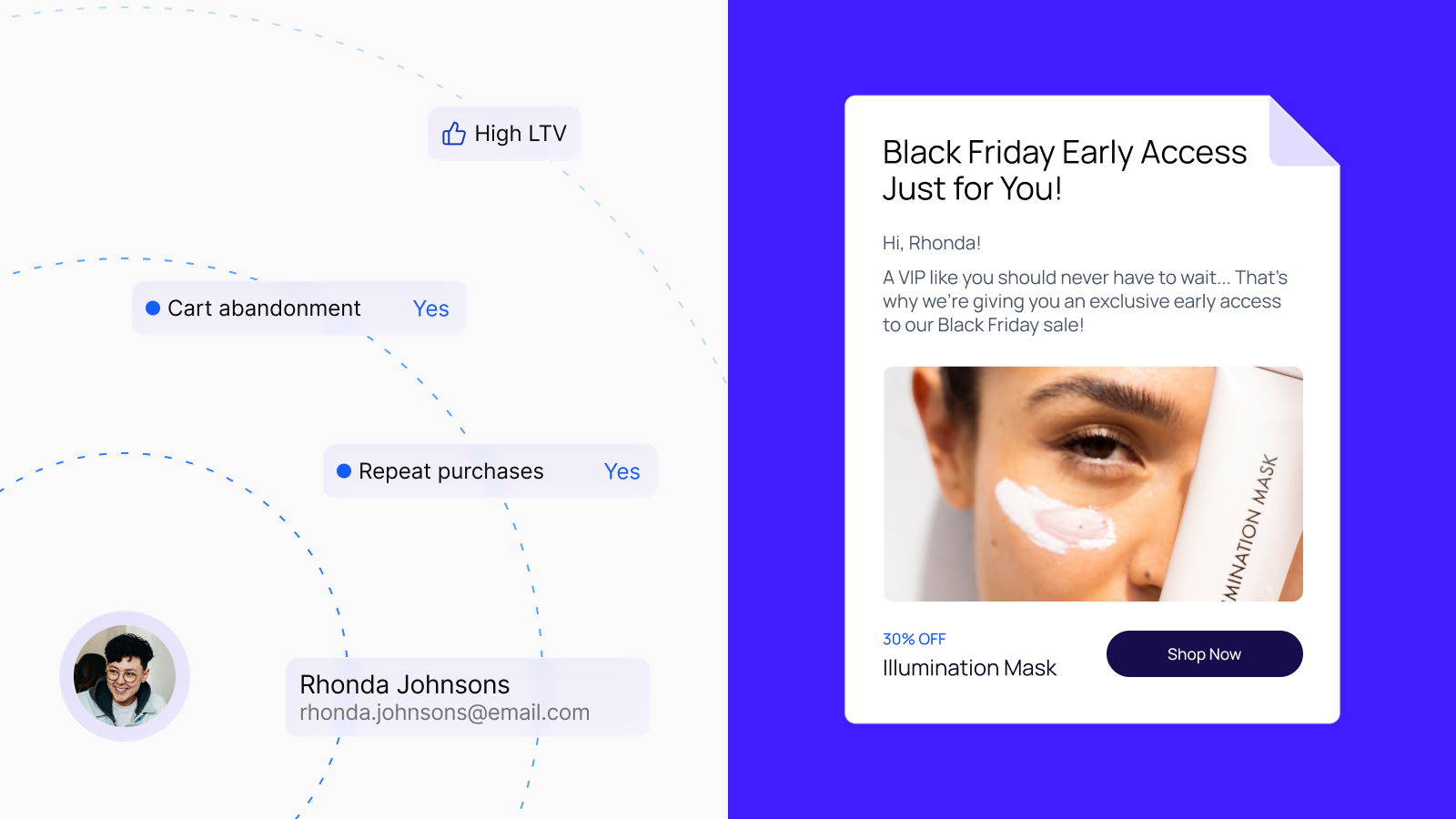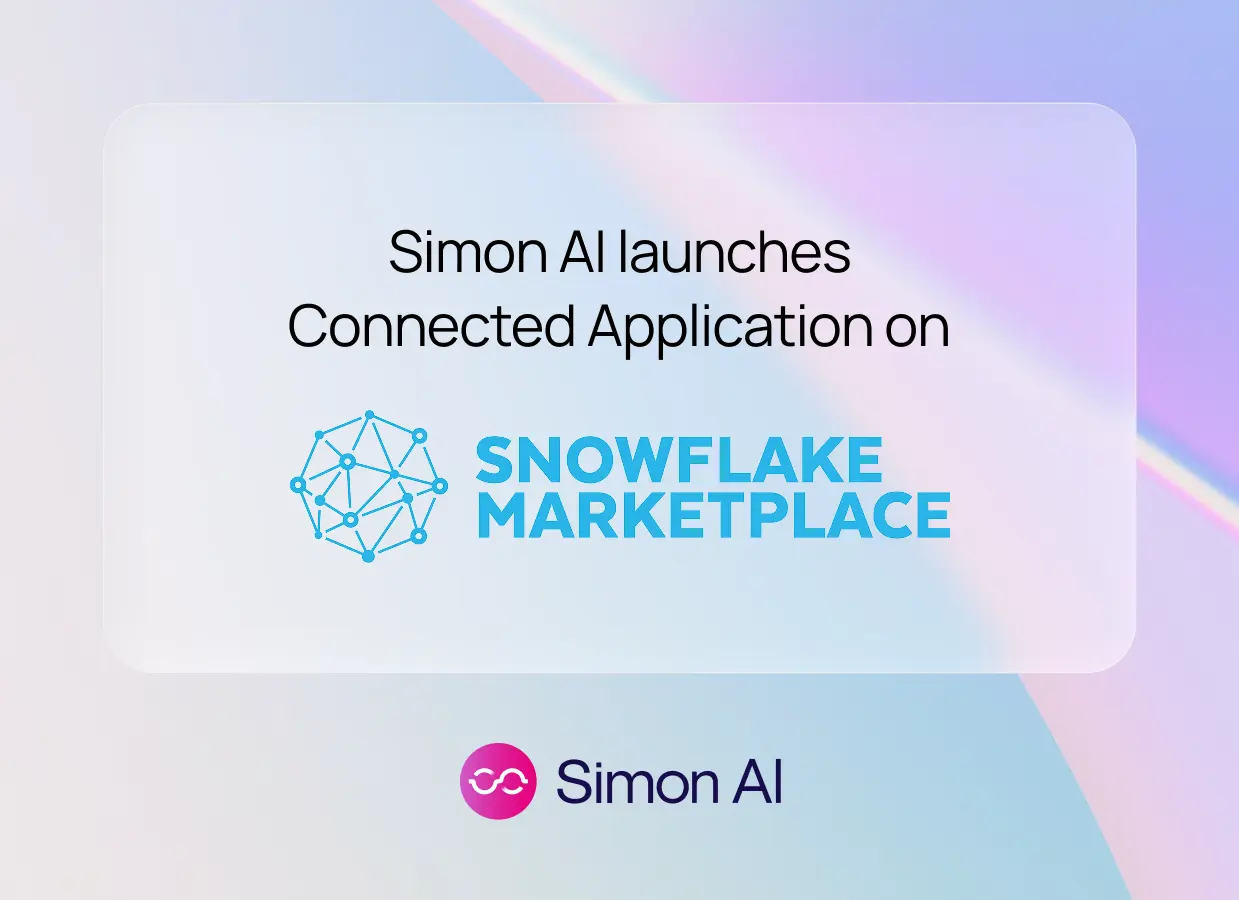Five ways AI is rewriting the BFCM playbook
Every marketer feels the same pressure as Black Friday and Cyber Monday approach: too much data, too many touchpoints, and too little time. What used to be a four-day promotional burst has become a high-stakes, multi-week competition for attention, engagement, and conversion.
Historically, brands coped by throwing more staff, more promotions, and more budget at the problem. But that approach no longer scales. The limits of manual planning, static segments, and fixed calendars become painfully clear during BFCM, when behavior shifts by the hour and last year’s “best practices” simply can’t keep up.
More brands are now turning to Agentic AI to change this equation. These AI systems use multiple autonomous “agents” that collaborate to analyze data, generate content, and make decisions in real time. Marketers still define the strategy, guardrails, and brand standards; Agentic AI simply executes the operational complexity. The result is segmentation and journeys that optimize as customers move through the funnel… not after the fact. And while these capabilities shine during the BFCM rush, their real value emerges once the season ends, when the intelligence gathered during “peak” becomes the foundation for long-term loyalty.
Here are five ways Agentic AI is reshaping the BFCM playbook and extending its impact well into the new year.
1. Smarter segmentation and micro-segmentation
The Challenge
Traditional segmentation schemas can’t keep pace with BFCM activity. Increased engagement carries with it more signals for each customer. Additionally, purchase intent and customer behavior shifts dramatically during the BFCM window. A “VIP” customer in September might act like a deal seeker in November. A low-frequency browser might suddenly exhibit high-intent behaviors that would normally take months to emerge. If your campaigns are wired to historic behavior, you’ll miss the real intent in front of you.
The result is a familiar holiday problem: irrelevant messages, poorly timed incentives, and wasted impressions during the most expensive week of the year.
How Agentic AI Helps
Agentic AI transforms segmentation from a static categorization exercise into an adaptive, real-time intelligence system. Instead of marketers defining each segment manually, data and insight agents continuously propose, test, and refine dozens of micro-segments based on what is actually working. Specifically, these agents:
- Ingest behavioral, transactional, and contextual signals (browse paths, cart actions, device, time of day) and update segments on the fly.
- Identify moment-in-time intent clusters, such as “Gifts for Dad researchers,” “high-margin category explorers,” “early morning mobile shoppers,” or “repeat browsers showing second-purchase potential.”
- Continually re-evaluate and refine micro-segments based on behavioral, transactional, and contextual signals: what people browse, how often they return, whether they show price sensitivity, what channels they use, etc.
- Connect directly to your engagement platforms, so each micro-segment is routed to tailored messaging flows.
2. Offer optimization without eroding margin
The Challenge
BFCM has always created tension between revenue and margin. The instinct to “win the weekend” pushes teams toward deeper and broader discounts, at the expense of eroded brand equity and compressed margins exactly when paid media is at its most expensive. Without precise insight into who needs a discount and who doesn’t, brands err on the side of over-discounting. The result: strong top-line performance paired with weakened profitability and increased discount dependency among customers.
How Agentic AI Helps
Agentic AI treats offer decisioning as a continuous optimization engine. Rather than relying on a pre-defined promotion calendar, the system dynamically adjusts incentives at the micro-segment level as new data points emerge. To achieve this, AI agents:
- Continuously test discount levels, offer framing, and incentive types (percent off, dollar off, gift with purchase, early access) across myriad micro-segments.
- Adjust offers dynamically based on predicted purchase probability, historical LTV, and price sensitivity.
- Auto-suppress discounts for customers who are likely to buy at full price or with lighter incentives such as early access.
- Surface new offer concepts that would be difficult to test manually at scale, then recommend the winners for roll-out, with supporting data.
In practical terms, you can set guardrails around margin and brand standards, then let AI explore the space within those constraints. This leads to smarter use of margin, not blanket erosion.

3. Product recommendations powered by real-time inventory
The Challenge
Every holiday season puts extraordinary strain on inventory. Products sell out quickly, supply chain snafus cause late arrivals, and inaccurate inventory data lead to a poor customer experience. Traditional recommendation engines typically rely on static models and stale inventory snapshots, resulting in promotions for items that are out of stock or hard to ship before key holiday deadlines.
This disconnect between personalization and inventory creates unnecessary friction. Customers click on items they can’t buy, and brands miss opportunities to move high-margin or well-stocked products.
How Agentic AI Helps
Tapping into AI’s ability to reconcile multiple datasets and structures on the fly, these systems merge personalized recommendations with real-time inventory levels. In terms of activity, these agents:
- Integrate live inventory feeds with recommendation models, incorporating stock levels, sell-through velocity, and margin into product rankings.
- Prioritize in-stock and high-margin products, while automatically suppressing or deprioritizing low-stock SKUs that are at risk of going out of stock.
- Suggest intelligent substitutes and complements when popular products sell out, based on similarity and historical attach patterns.
- Factor fulfillment windows into recommendations, highlighting items that can still arrive by key dates such as Christmas or New Year’s.
This turns recommendations from a static “You might also like” widget into a real-time merchandising engine, tuned to both customer and business opportunities, all while avoiding the poor customer experiences that undermine long-term loyalty.
4. Customized creative at scale
The Challenge
The creative output required during BFCM has outpaced what even the best teams can produce manually. Daily deal waves, multiple micro-segments, and omnichannel execution demand a constant stream of variations: subject lines, product callouts, onsite messaging, SMS copy, and paid media creative. Yet teams are still expected to maintain brand consistency while increasing personalization. It’s almost an impossible combination.
The result is predictable: generic campaigns, reused assets, and missed opportunities to tailor messages to specific behaviors.
How Agentic AI Helps
Agentic AI amplifies the creative team’s capabilities by generating high-quality, on-brand variations at scale. Creative teams establish the voice, guidelines, and narrative direction; AI systems handle the multiple variation complexity. To achieve this, they:
- Generate tailored subject lines, headlines, CTAs, and product copy for each segment or intent cluster.
- Adjust tone, urgency, and framing based on region, engagement level, and lifestyle context (e.g. single, couple, family).
- Work from pre-approved brand guidelines and guardrails, so messages stay on voice and within legal and regulatory boundaries.
- Run continuous multivariate creative tests, then roll out winners automatically while retiring underperformers.
- Support channel-specific creative, such as shorter, more urgent SMS copy, richer email stories, and tighter paid media variants.
By marrying expressive AI capabilities with automation and journey agents, these systems help marketers reap the benefits of truly customized content, without sacrificing brand guideline consistency.
5. Dynamic journey and channel optimization
The Challenge
Holiday campaign performance changes by the hour. Email may spike in the morning and fall flat by mid-afternoon. SMS may surge right before shipping deadlines. Paid media ROI may swing dramatically based on time of day, audience saturation, or creative rotation. Yet most marketing calendars are locked weeks in advance and journeys are built as locked decision trees, not adaptive systems. Manual optimization isn’t just inefficient, it’s near impossible at BFCM scale.
How Agentic AI Helps
Agentic AI turns the entire journey into a responsive system. Optimization agents watch for shifts in engagement, identify friction points, detect fatigue, and work with automation agents to adjust communications accordingly:
- Monitor engagement across email, SMS, app, web, and paid media in real time, looking for shifts in performance.
- Adjust send timing, frequency, and channel mix automatically, based on live response curves and diminishing returns.
- Move budget between channels where you see better incremental return, especially in costlier paid media and retargeting platforms.
- Detect funnel friction, such as spikes in cart abandonment or checkout exits, and trigger immediate re-engagement using the channel most likely to work.
- Coordinate messaging across platforms for each micro-segment to reduce overlap and avoid bombarding the same customer with redundant promotions.
You still set the strategy and guardrails, but you are no longer manually dialing every lever during the highest-pressure week of the year. Instead of making decisions in hindsight, the system acts in real time, exactly when the opportunity exists.
Conclusion: BFCM as the launchpad for lifelong loyalty
Agentic AI transforms BFCM from a high-pressure holiday sprint into a continuous intelligence loop. The same systems that optimize segmentation, offers, creative, and journeys during peak season become the backbone of long-term customer value immediately afterward. Brands can carry forward micro-segments, elasticity models, inventory signals, creative learnings, and journey insights into the new year.
The net effect is that winning BFCM no longer means a mad rush of offers and batch-and-blast promotions. It means creating systems that deliver a customized holiday experience for each user. And done right, these systems keep working long after the surge ends, turning seasonal shoppers into loyal, long-term customers who stay engaged well beyond December.
.jpg)


.webp)




